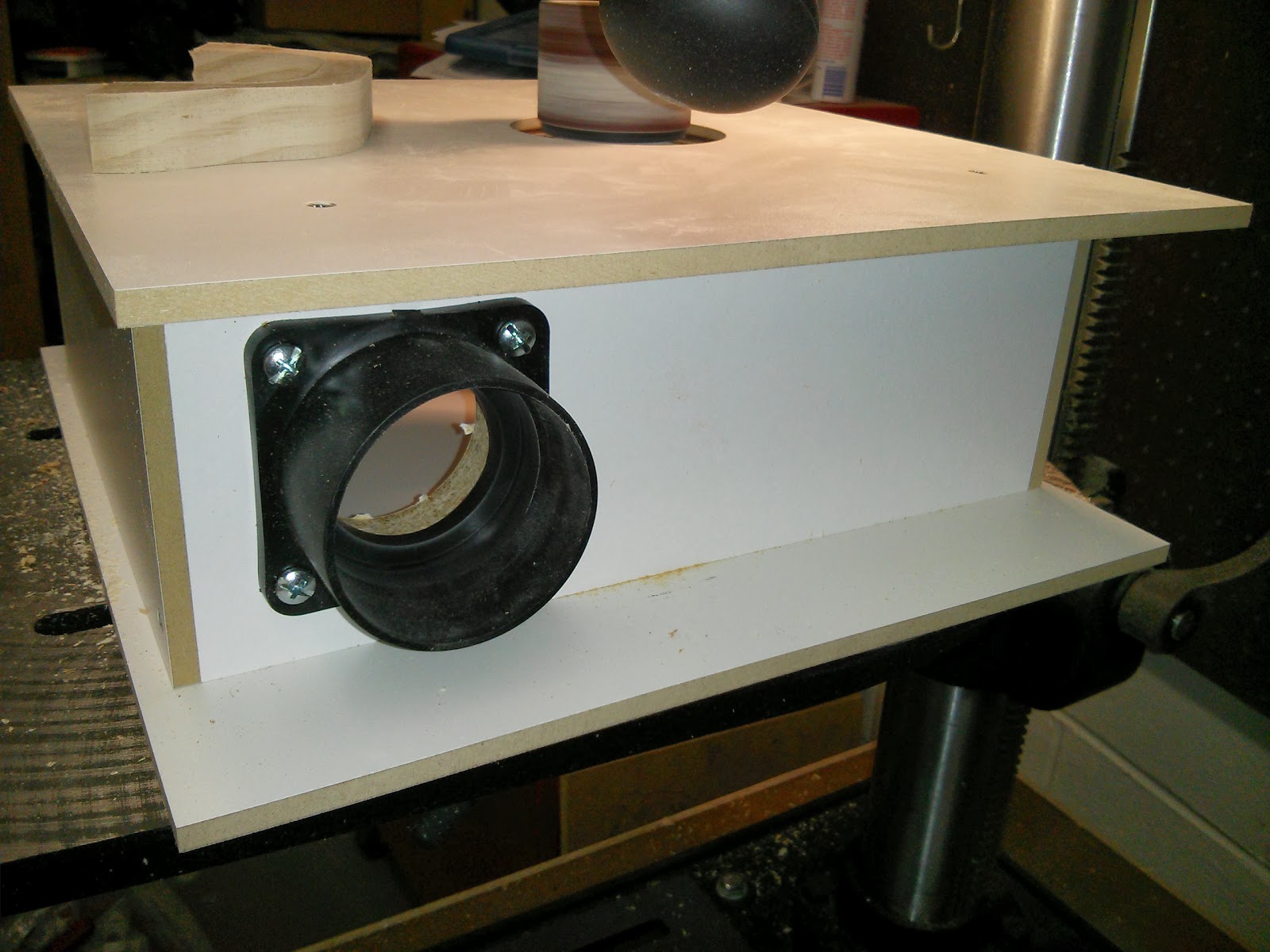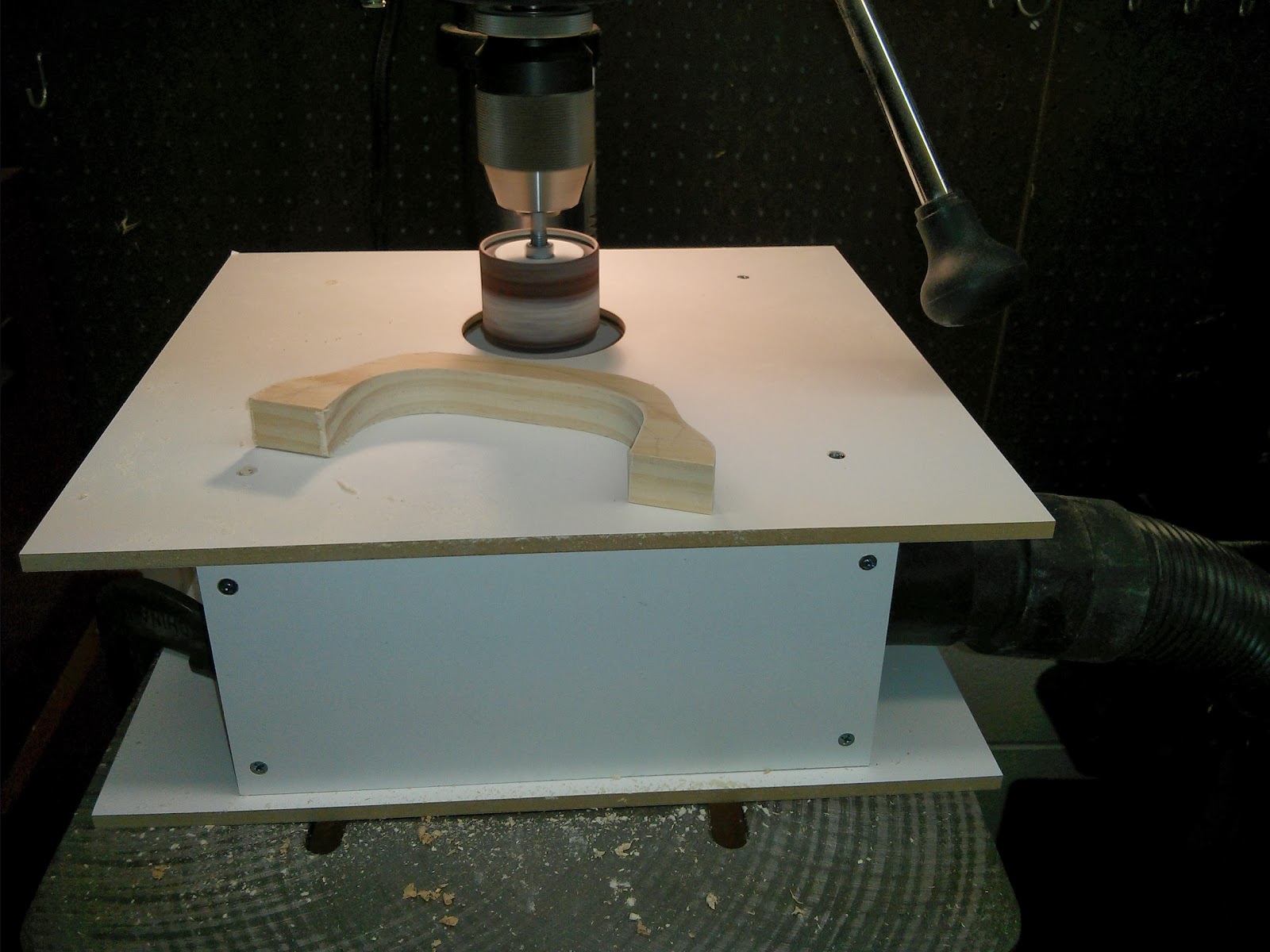Dust
is irritating in several ways. It coats everything in the shop
including your lungs. Drill press sanding drums come in various sizes
and are a great way to shape rough cut objects, mostly freely, but the
helping constraint of the drum's diameter.
Sanders generates a large amount of dust, but here is a simple dust
collector for drill press drum sanders. The idea is not new (Ex1, Ex2, Ex3),
and the concept is simple enough that plans are unlikely to be needed.
If the intake diameter is a bit larger than your largest drum sander,
the sander can be partially below the surface. However, the intake seems
strong enough that it works fine when the sander is raised above the
surface.
Here scrap melamine hobby board was used for the top, bottom, and a
couple of sides, providing a smooth hard surface to slide work, and dust
to slide off. The vacuum attachment port was sold as a step reducer,
and the step reduction portion was cut off. The vacuum port is a soft
material, and the weight of the hose tends to distort the port. While it
does function, a port made of harder material is desirable. Run the top
and bottom pieces a little past the main frame. This gives a more
stable work surfaces, but also provides an area to clamp to the drill
press table, and helps to avoid the vacuum hose.
Simple helpful project. This setup can also help to shape aluminum and
other soft metals, although they get warm fast. It might also work with
small wire brushes, e.g., to clean up rusty steel.
Metal dust may be more harmful than wood dust. For grinders with odd shape vacuum ports, making an adapter is worthwhile.

